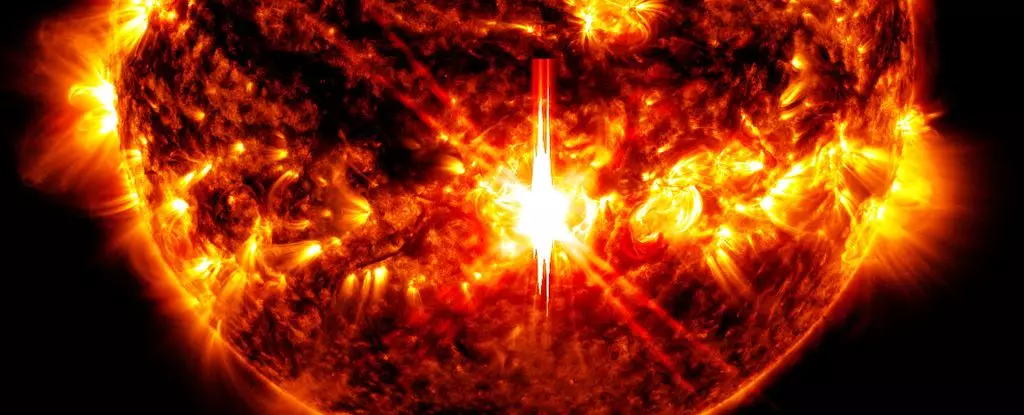In a captivating event for both scientists and skywatchers alike, the Sun recently released an exceptionally powerful solar flare. On October 3, 2024, a staggering X9.0 flare erupted from an active sunspot region, marking the most intense solar activity recorded in seven years. This extreme phenomenon not only showcased the Sun’s volatile nature but also facilitated an exciting coronal mass ejection (CME) directed straight at Earth. The significance of this event lies not only in its magnitude but also in its implications for our planet and the conditions for viewing stunning auroras.
Solar flares occur when there is a rapid release of energy in the Sun’s atmosphere, often associated with complex magnetic interactions in regions known as sunspots. These sunspot regions are categorized by their magnetic field configurations, with the beta-gamma-delta classification denoting an area of particularly tangled and dynamic magnetic fields. The recent X-class flares arise from such an active sunspot region, labeled AR 3842, which has shown an alarming capacity for producing intense solar activity, first triggering an X7.1 flare shortly before the remarkable X9.0 event.
The classification of flares into categories such as C, M, and X is critical, with each rising level indicating increasing intensity. The X-class flares are particularly noteworthy due to their capability to generate significant disturbances both in space and near Earth. Previous flare activity over the past two years indicates a peak in solar activity as the Sun nears the crest of its 11-year solar cycle, leading to a surge in such powerful events.
The implications of solar flares extend beyond simple astronomical curiosity. While Earth’s atmosphere provides a protective shield against high-energy X- and gamma radiation, these flares can disrupt radio communications and GPS systems. Among the most critical effects come from associated CMEs, which propel vast amounts of solar particles towards Earth and can interact with our planet’s magnetic field, leading to a phenomenon known as geomagnetic storms.
These storms can induce electric currents in the atmosphere that affect the stability of power grids, potentially leading to fluctuations that require adjustments to maintain operational integrity. Furthermore, satellites may experience increased drag as these charged particles bombard their surfaces, necessitating course corrections to maintain their intended orbits. Such disruptions serve as a reminder of Earth’s vulnerability to solar phenomena and highlight the importance of ongoing solar observation.
However, not all consequences of solar flares and CMEs are detrimental. The vibrant display of auroras is a stunning byproduct of these cosmic events. When solar particles collide with Earth’s upper atmosphere, they ionize and excite atmospheric gases, resulting in brilliant displays of light predominantly observed near the poles. The recent X9.0 flare has triggered heightened aurora activity, potentially extending visibility further south than usual.
As forecasted, the coming days post-flare presented an excellent opportunity for skywatchers to witness these natural light shows. The NOAA predicted multiple days of ideal conditions for aurora observance, exciting enthusiasts who often undertake extensive travels to prime locations for optimal viewing experiences. The dynamic nature of auroras, with colors varying based on different atmospheric constituents, draws people into the beauty of Earth’s connection to solar activity.
The recent solar flares serve as a reminder of the Sun’s role in shaping life on Earth. While technological advancements have allowed us to predict and mitigate some of the potential disruptions caused by solar activity, the breathtaking spectacle of auroras captures our imagination and highlights our place within the cosmos. It encourages us not only to observe but also to appreciate the intricate and often unpredictable relationships between our planet and the Sun. As we continue to explore these celestial interactions, we gain insight not only into our own world but also into the dynamic universe surrounding us.
The X-class flares of October 2024 offer an engaging narrative of solar activity, technological implications, and breathtaking beauty. Whether through scientific inquiry or simply standing beneath a dancing sky, these events inspire awe and curiosity about the universe’s mysteries.


Leave a Reply